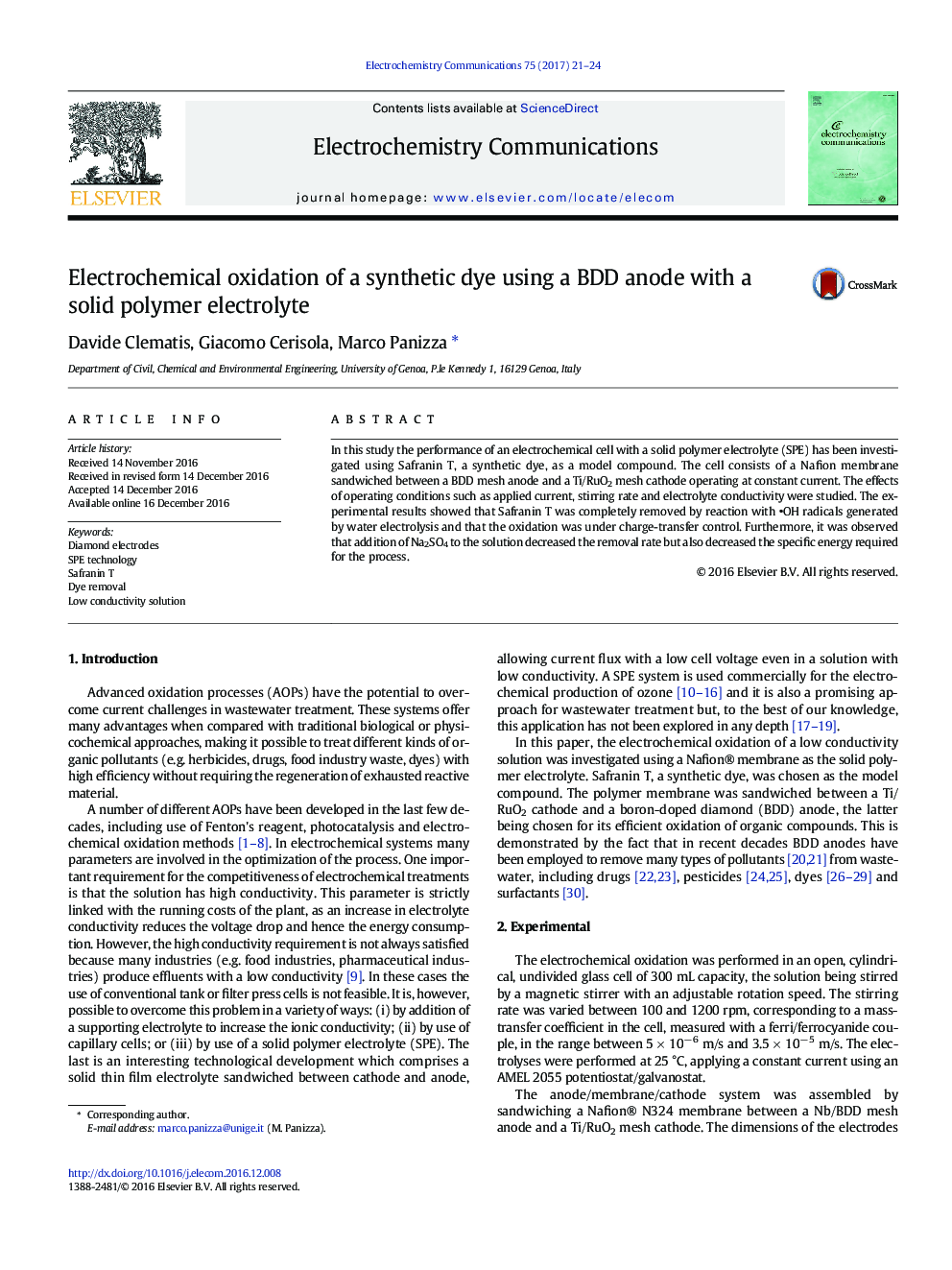| Article ID | Journal | Published Year | Pages | File Type |
|---|---|---|---|---|
| 6469714 | Electrochemistry Communications | 2017 | 4 Pages |
â¢Safranin T dye degraded by anodic oxidation using SPE technology with BDD anode.â¢Almost complete Safranin T removal (COD approaching 0) was obtained.â¢Oxidation was under charge-transfer control.â¢Removal rate depended on applied current and solution conductivity.â¢Addition of Na2SO4 decreased the removal rate and the energy consumption.
In this study the performance of an electrochemical cell with a solid polymer electrolyte (SPE) has been investigated using Safranin T, a synthetic dye, as a model compound. The cell consists of a Nafion membrane sandwiched between a BDD mesh anode and a Ti/RuO2 mesh cathode operating at constant current. The effects of operating conditions such as applied current, stirring rate and electrolyte conductivity were studied. The experimental results showed that Safranin T was completely removed by reaction with OH radicals generated by water electrolysis and that the oxidation was under charge-transfer control. Furthermore, it was observed that addition of Na2SO4 to the solution decreased the removal rate but also decreased the specific energy required for the process.
